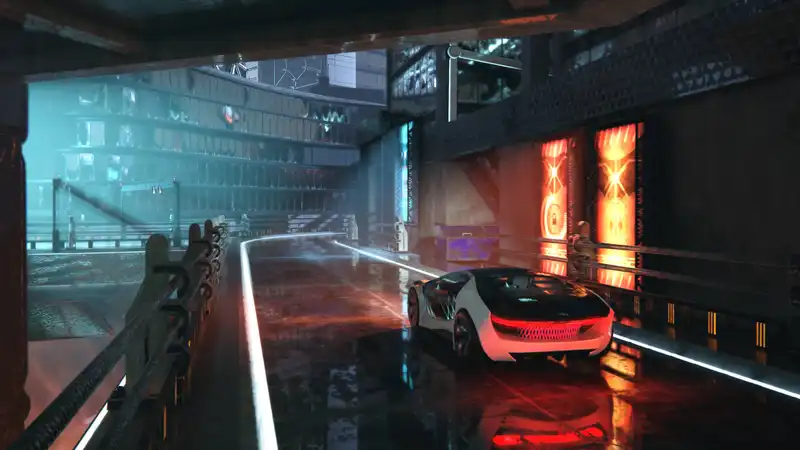If you want to test the ray-tracing performance of a graphics card, you have several choices. Most reviewers, including us, use the Cyberpunk 2077 for ray-intensive workloads and F1 22 or Far Cry 6 for slightly lighter workloads. Also, 3DMark's Synthetic Port Royal is almost completely ray-traced. Now a new test from Basemark has been released, claiming to be the world's first "true cross-platform benchmark for ray-tracing devices."
The reason Basemark feels it can make such a claim is probably the availability of benchmarks for Windows, Linux, Android, and iOS devices. Anyway, my curiosity piqued, I ran some tests on a few PCs to see how current graphics cards handle ray-tracing workloads.
There are two versions of the main test: Ultra and Cross-platform. The differences are in the rendering resolution (4K vs. 1080p), the number of lights projecting shadows (49 vs. 11), and the amount of VRAM used (6 vs. 2.1 GB). Ray-traced global illumination and full-scale reflections were also used in the Ultra test. Finally, there are two upscaled versions of the main test, using DLSS 2 and FSR 2.
As you can see, there are quite large differences between the GPUs tested, but none of the results are surprising. This is because the ray tracing performance of today's graphics cards is well known among PC gamers, with Nvidia's graphics chips being the most capable in this regard, followed by AMD and Intel. [However, for some games that use ray tracing, such as "Far Cry 6," AMD GPUs are perfectly suited. In the case of Breaking Limits Ultra, where shadows, reflections, and lighting are all ray-traced, the RTX 4070 tested better than the RX 7800 XT.
However, ray tracing not only requires special hardware units to accelerate BVH traversal and ray and triangle intersection calculations. It also requires a GPU that is good at handling compute shaders, which is where the Ada Lovelace and RDNA 3 chips excel, and Breaking Limit makes heavy use of compute shaders. GPU profiling analysis on an RTX 4080 Super during Ultra testing During Ultra testing, we ran GPU profiling analysis on the RTX 4080 Super and found that at one point 95% of all shader units were flat out performing compute processing.
The RX 6750 XT and Arc A770 are considerably less capable than the other graphics cards in this regard. Nevertheless, the latter's peak FP32 throughput is 48% higher than the former.
So why did the RDNA 2 chip achieve nearly the same results as the more powerful Alchemist GPU? The answer almost certainly lies in the drivers and shader compiler, and Intel may choose to release a new set that improves the GPU's behavior with Breaking Limit.
Whether Intel actually does so may come down to one question: will Breaking Limit become the test of choice for synthetic ray tracing, replacing Port Royal and Speed Way?
For PC gamers, probably not. I don't think we are being unfair here, as the entire benchmark download is less than 1 GB. Even though it is a fairly short benchmark, with this many assets, there is little chance of it being a visual tour de force.
However, it is well done and the interface is, in my opinion, easier to navigate and use than 3DMark's. There is little else to choose from on the market as a means of finding out how well completely different platforms can handle common ray tracing tests. And any ray tracing test should give the GPU a pretty good beating.
"Breaking Limit" is free to download for non-commercial use.


Comments